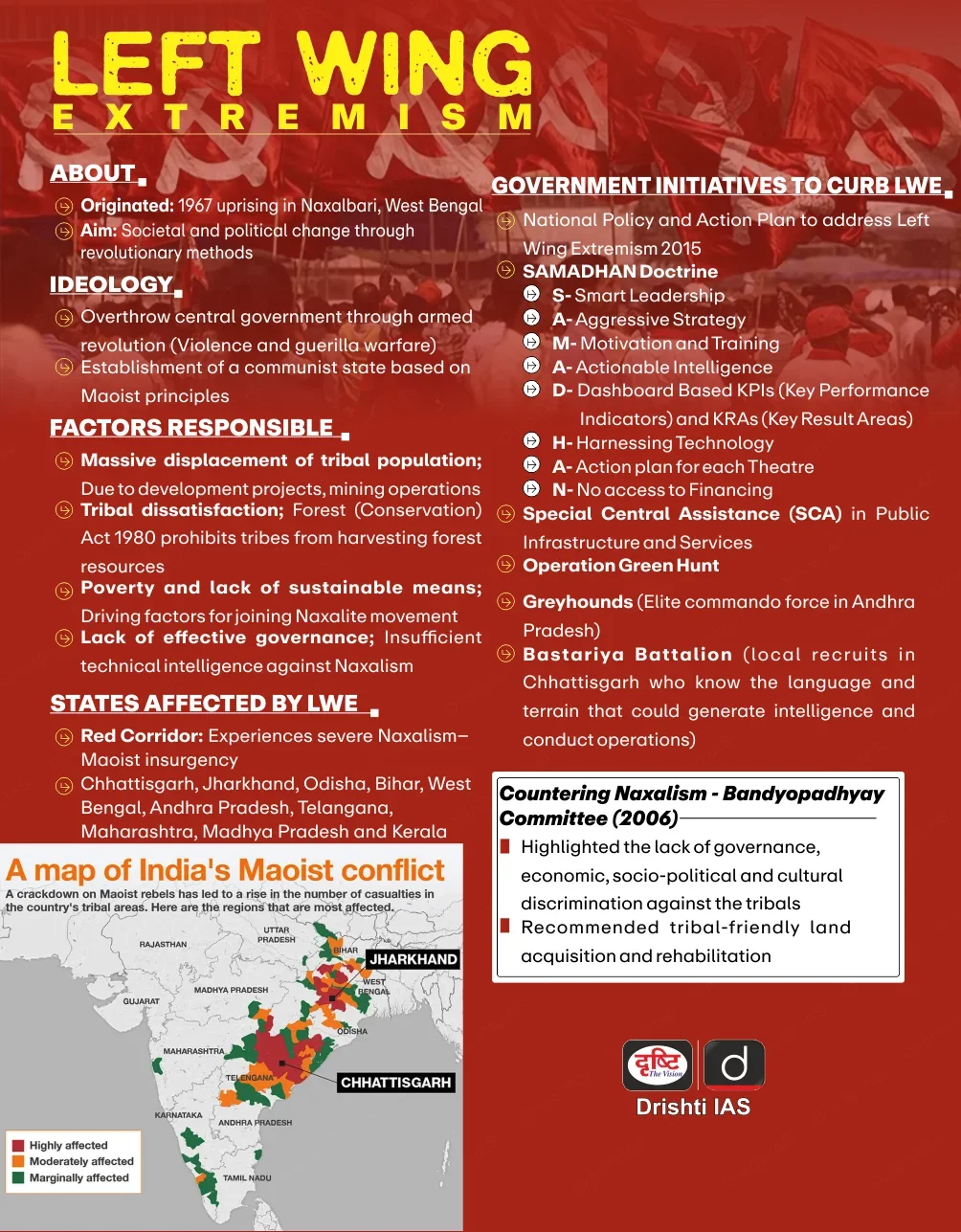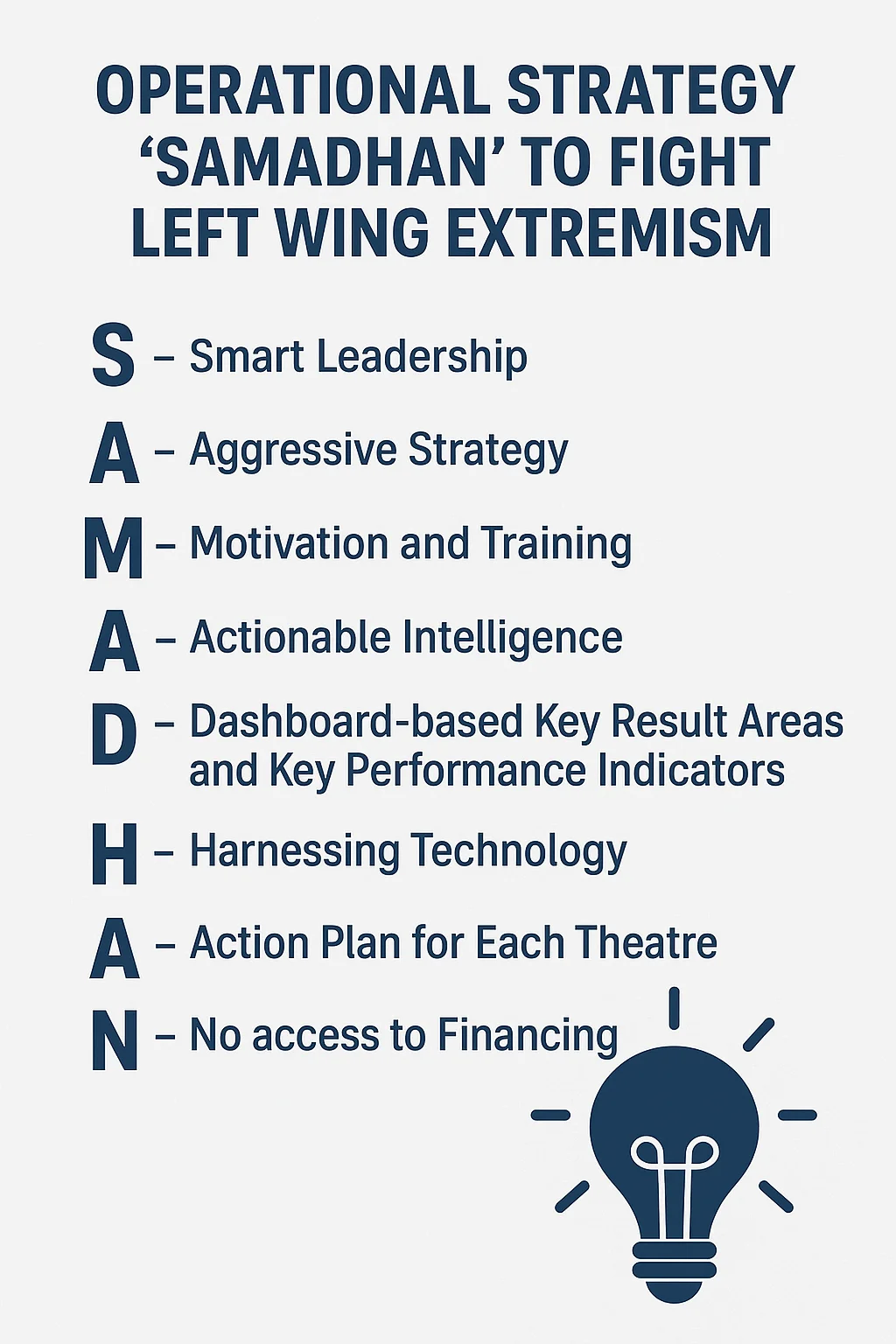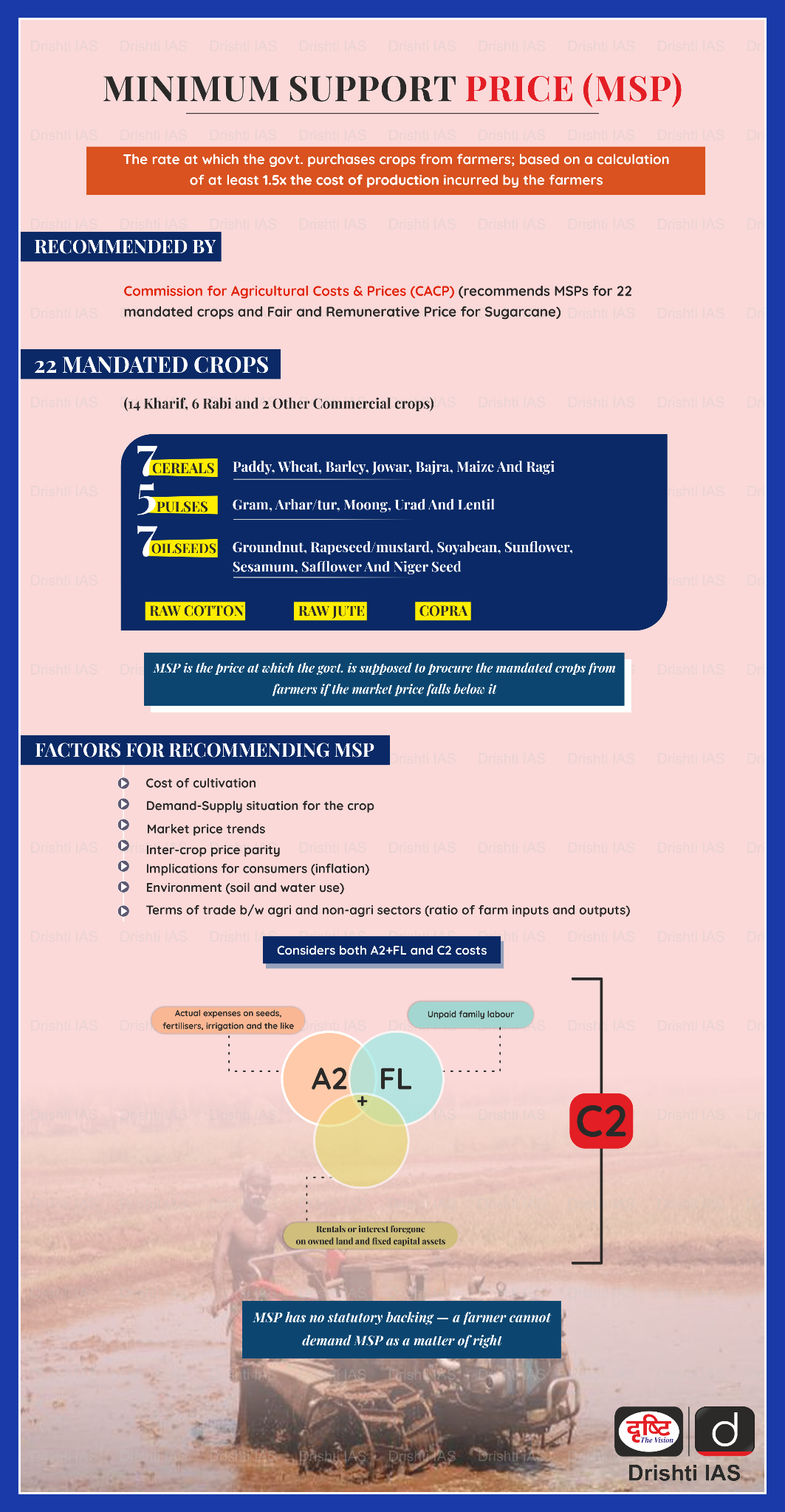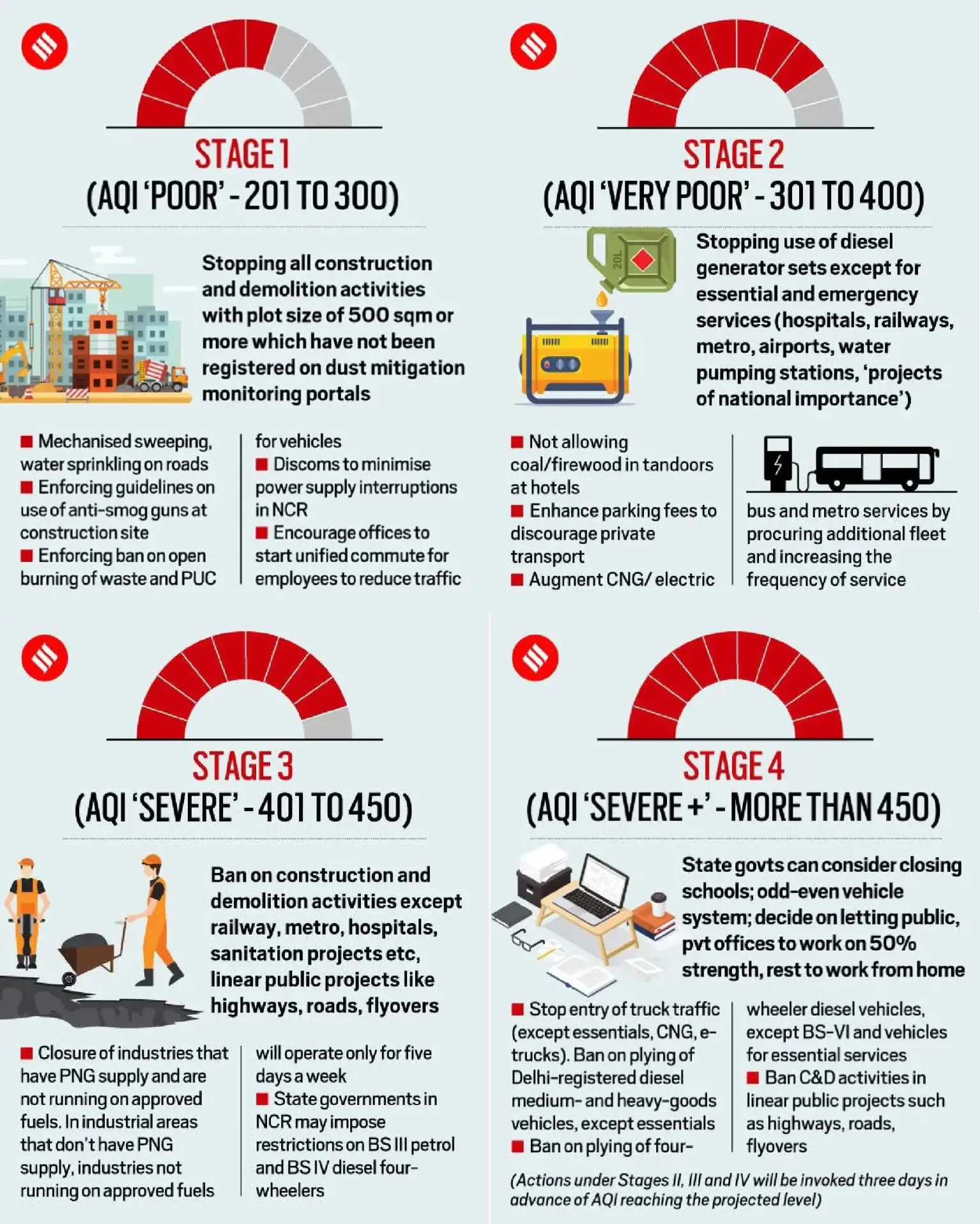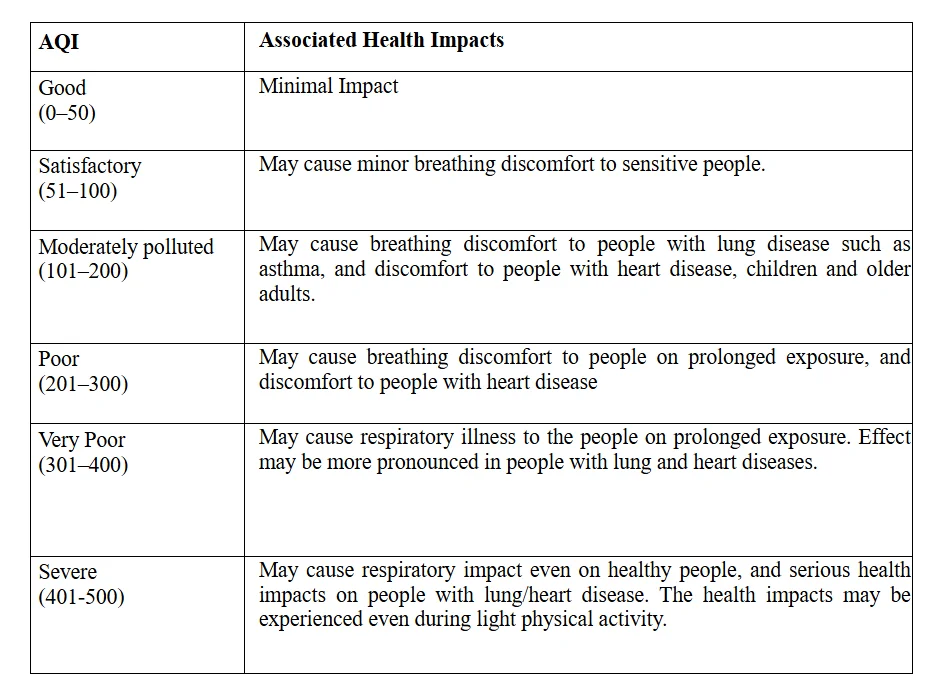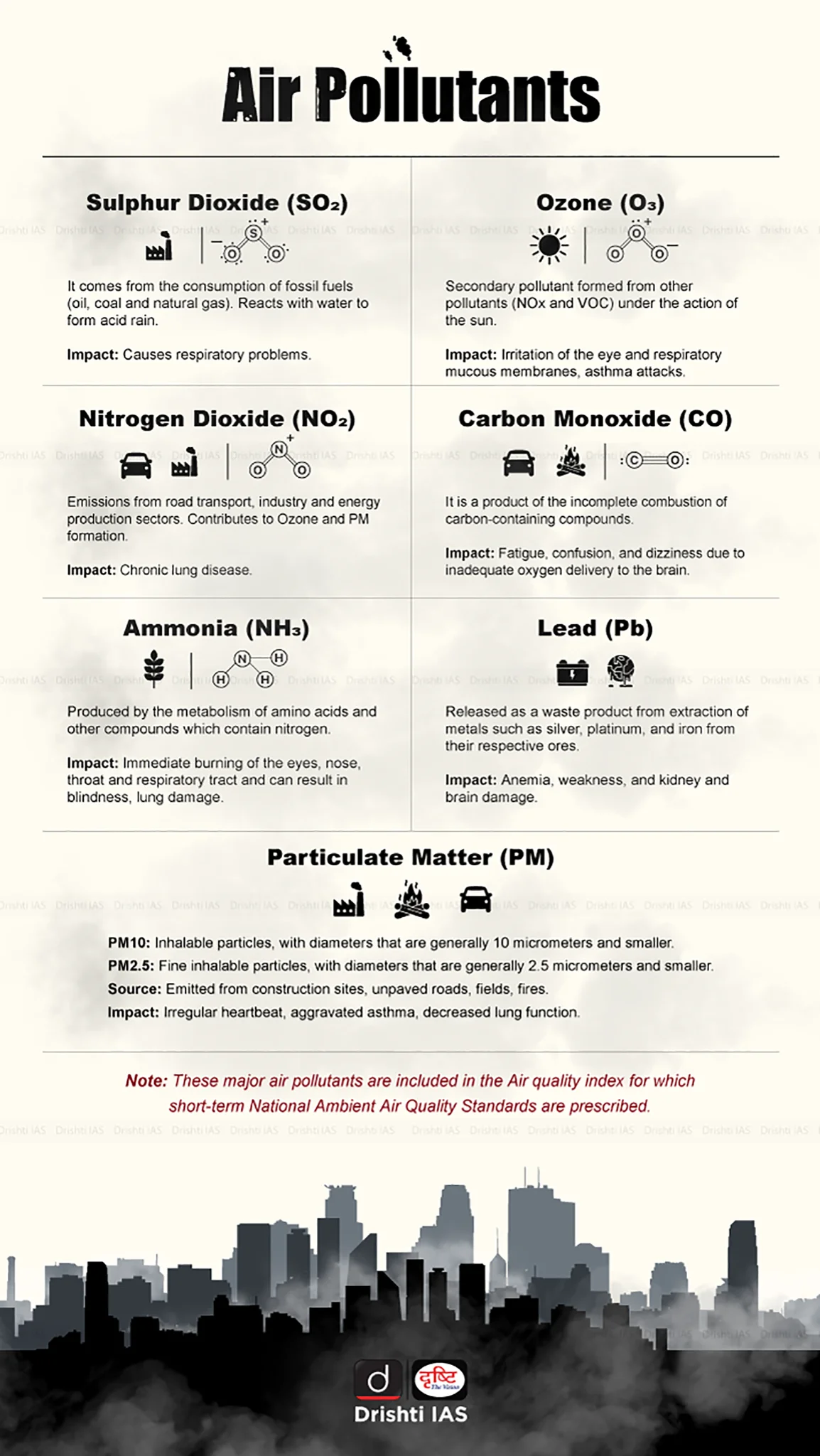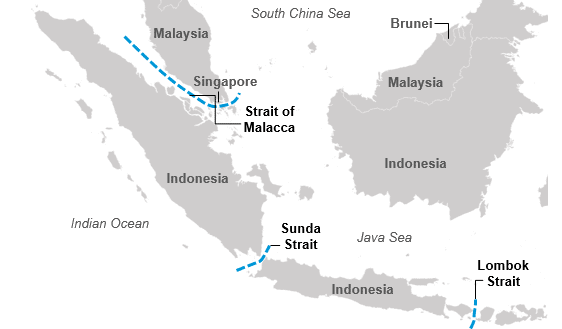Internal Security
India’s Progress Towards a Naxal-Free Bharat
For Prelims: Left Wing Extremism, National Investigation Agency, Red Corridor, SAMADHAN doctrine
For Mains: Breakthroughs of India in Combating Left Wing Extremism, Key Factors Behind Persistence of LWE in India.
Why in News?
The Maoist insurgency in India is gradually losing ground, with key leaders surrendering and many cadres leaving the movement. This reflects India’s steady progress in eliminating Naxalism and strengthening law enforcement efforts in affected regions.
What is the Status of Maoism or Left Wing Extremism (LWE) in India?
- Shrinking Geographical Spread: LWE, once India's biggest internal security challenge, spread across the "Red Corridor" from Nepal's border in the north to Andhra Pradesh in the south, covering parts of Chhattisgarh, Jharkhand, Odisha, Maharashtra, and Andhra Pradesh.
- It is now confined to small pockets in central India, primarily in Chhattisgarh, with a limited presence in Jharkhand, Odisha, and Maharashtra.
- Decline in Violence and Cadre Strength: In 2013, 126 districts reported Naxal violence; by March 2025, this dropped to 18 districts, with only 6 classified as “Most Affected.”
- Left Wing Extremism (LWE) incidents dropped by more than 50% between 2004–14 and 2014–23.
- Maoism in India is in retreat, both territorially and operationally, with the government aiming for a completely Naxal-free Bharat by March 2026.
What is Maoism?
- About: Maoism is a form of communism developed by Mao Tse Tung. It seeks to capture state power through armed insurgency, mass mobilization, and strategic alliances, supported by propaganda and misinformation against state institutions.
- Mao called this process, the ‘Protracted People's War’, where the emphasis is on ‘military line’ to capture power.
- Naxalism often referred to as Left Wing Extremism (LWE), is an armed movement inspired by Maoist ideology that seeks to overthrow the Indian government through violent rebellion.
- The term Naxalite comes from the 1967 uprising in Naxalbari, West Bengal, led by CPI(M) members. It refers to those advocating armed revolt against the state.
- Maoist Ideology: The central theme of Maoist ideology is the use of violence and armed insurrection as a means to capture State power.
- Indian Maoists: The largest and the most violent Maoist formation in India is the Communist Party of India (Maoist) formed in 2004.
- The CPI (Maoist) and its front organizations were banned under the Unlawful Activities (Prevention) Act, 1967.
- Front Organizations are the off-shoots of the parent Maoist party, which professes a separate existence to escape legal liability.
- The CPI (Maoist) and its front organizations were banned under the Unlawful Activities (Prevention) Act, 1967.
What is India’s Strategy to Eliminate Left Wing Extremism (LWE)?
- Policy Framework: To address the LWE menace holistically, India approved a National Policy and Action Plan in 2015.
- It envisages a multi-pronged strategy involving security related measures, development interventions, ensuring rights and entitlements of local communities etc.
- The policy is complemented by the operational strategy ‘SAMADHAN’, together aiming to achieve a Naxal-free Bharat and transform Red Zones into Growth Corridors by March 2026.
- Security Measures:
- Deployment of Forces & Joint Operations: Central Armed Police Forces (CAPFs), India Reserve Battalions, and Joint Task Forces carry out intelligence-led operations, including major offensives like Operation Black Forest (Operation Kagar).
- Scheme of Fortified Police stations: Construction of Fortified Police Stations, security camps and night landing helipads to strengthen operational readiness.
- Security Related Expenditure (SRE) Scheme: Supports training, operations, community policing, ex-gratia payments, and rehabilitation of surrendered cadres.
- Financial & Intelligence Control: National Investigation Agency (NIA) and Enforcement Directorate target Maoist funding to cut off financial resources.
- Development Initiatives:
- Road Connectivity (RRP-I & RCPLWE): Expands road networks to improve access for both security and development purposes.
- Telecom Connectivity: Mobile Connectivity Projects and 4G expansion aim to connect all LWE-affected areas by December 2025.
- Financial Inclusion: Bank branches, ATMs, post offices, and Banking Correspondents operationalized to provide services in remote areas.
- Skill Development & Education: Industrial Training Institutes (ITIs), Skill Development Centres, and Eklavya Model Residential Schools strengthen human capital in tribal areas.
- Special Infrastructure Scheme (SIS) & Special Central Assistance (SCA): Funds for district-level facilities, police infrastructure, and essential public services.
- Dharti Aaba Janjatiya Gram Utkarsh Abhiyan (2024 launch): Focus on personal amenities, improving road, mobile, and financial connectivity in over 15,000 villages.
- Empowerment & Public Engagement
- Civic Action Programme (CAP): Provides financial support for CAPFs to engage in welfare activities, fostering trust between security forces and communities.
- Media Plan: This scheme is being implemented as a sub-scheme under the Umbrella Scheme 'Modernization of Police Forces'.
- It includes activities such as Tribal Youth Exchange Programs, radio jingles, documentaries, pamphlets, and other outreach materials, all aimed at countering Maoist propaganda through awareness campaigns.
- Rehabilitation of Cadres: Surrendered Maoists are provided education, vocational training, and financial aid to reintegrate them into society.
What are the Challenges Encountered by India in Controlling Left Wing Extremism (LWE)?
- Mnemonic: “INSURGENT.”
- I – Insufficient State Reach: Limited reach of the state in remote and forested areas reduces the ability to monitor and counter insurgent activities effectively.
- N – Neglect / Lack of Development: Chronic neglect, lack of basic infrastructure, and minimal economic opportunities in affected areas create fertile ground for insurgent influence.
- S – Socio-economic Grievances: Widespread poverty, unemployment, and social inequalities drive marginalized communities to support Maoist ideology as a path to better resources and rights.
- U – Unstable Governance: Weak administration, local corruption, and lack of accountability allow LWE groups to operate with impunity.
- R – Remote / Difficult Terrain: Dense forests, hilly terrains, and inaccessible regions in the Red Corridor make surveillance and security operations challenging.
- G – Guerrilla Tactics & Mobilization: Highly mobile Maoist units use guerrilla warfare, ambushes, and infiltration of villages to sustain operations and evade capture.
- E – External Support: Some Maoist groups receive logistical, financial, or ideological backing from external sources, strengthening their capacity.
- N – Narratives / Propaganda: Maoists exploit local grievances through media, pamphlets, and word-of-mouth to recruit youth and maintain ideological influence.
- T – Tribal / Community Influence: Support from local and tribal communities, often driven by shared grievances or coercion, helps Maoists sustain their presence in rural areas.
What Measures can India Further Adopt for Naxal-Free Bharat?
- Mnemonic: “REINFORCE.”
- R – Revitalize Local Governance: Empower panchayats in tribal and remote areas to ensure faster grievance redressal, reducing the appeal of extremist ideologies.
- E – Employment & Livelihoods: Create sustainable rural jobs through vocational training, entrepreneurship programs, and community-driven initiatives to integrate tribal youth into the formal economy and reduce dependence on illegal activities.
- I – Infrastructure Development: Improve connectivity, electricity, telecom, and access to healthcare in LWE-affected regions to break isolation and integrate remote areas into the national economy.
- N – Nurture Culture: Strengthen democratic values while preserving local culture, art, and languages to counter extremist narratives.
- F – Focus on Social Justice & Land Reforms: Implement the Forest Rights Act stringently, redistribute land, and ensure the rights of marginalized communities to address historical grievances that fuel discontent.
- O – Organize Community Policing & Trust-building: Adopt SMART policing and civic action initiatives to foster trust between security forces and local populations, making extremist infiltration more difficult.
- R – Rehabilitate & Counter Extremism: Launch awareness campaigns against Maoist propaganda and support rehabilitation programs to reintegrate affected individuals while empowering communities with peaceful avenues for redressal.
- C – Cooperatives & Economic Empowerment: Promote rural cooperatives in agriculture, handicrafts, and forest products, providing micro-loans and market access to build self-sustaining local economies.
- E – Enforcement & Border Security; Strengthen cross-border security, monitor arms and fund flows, and coordinate intelligence to disrupt Maoist logistics and prevent regrouping.
Conclusion
India’s multi-pronged strategy combining security, development, and rights-based empowerment has sharply weakened LWE, shrinking affected areas and restoring governance. Sustained political will and public participation have brought the country closer to a Naxal-free India.
|
Drishti Mains Question: Evaluate the effectiveness of India’s multi-pronged strategy in reducing Left Wing Extremism. |
Frequently Asked Questions (FAQs)
1. What is Maoism?
A communist ideology by Mao Tse Tung aiming to capture state power via armed insurgency and mass mobilization.
2. Which is the largest Maoist group in India?
Communist Party of India (Maoist), formed in 2004.
3. Are Maoist organizations legal in India?
No, CPI (Maoist) and its front organizations are banned under UAPA, 1967.
UPSC Civil Services Examination, Previous Year Question (PYQ)
Mains
Q. What are the determinants of left-wing extremism in the Eastern part of India? What Strategy should the Government of India, civil administration and security forces adopt to counter the threat in the affected areas? (2020)
Q. The persisting drives of the government for development of large industries in backward areas have resulted in isolating the tribal population and the farmers who face multiple displacements. With Malkangiri and Naxalbari foci, discuss the corrective strategies needed to win the Left Wing Extremism (LWE) doctrine that affected citizens back into the mainstream of social and economic growth. (2015)


Agriculture
Minimum Support Prices: From Safety Net to Self-Sufficiency
For Prelims: Pulses, Minimum Support Price (MSP), El Niño, Mission for Self-reliance in Pulses, Pradhan Mantri Annadata Aay Sanrakshan Abhiyan (PM-AASHA) Scheme.
For Mains: Trends in India’s pulses production and imports, Issues regarding India’s pulses production and import, Measures needed to achieve self-sufficiency in pulses.
Why in News?
The Government of India has approved the Minimum Support Prices (MSP) for Rabi Marketing Season (RMS) 2026–27, with an estimated procurement of 297 Lakh Metric Tonnes (LMT). This marks a shift in MSP policy from mere price support to promoting self-sufficiency, particularly in pulses and oilseeds.
Minimum Support Price (MSP)
- Definition: MSP is the price at which the government procures crops directly from farmers, offering them assured income and protection from market volatility.
- Determination:
- MSPs are recommended by the Commission for Agricultural Costs and Prices (CACP) — an attached office under the Ministry of Agriculture and Farmers Welfare, established in 1965.
- The Cabinet Committee on Economic Affairs (CCEA), chaired by the Prime Minister, gives the final approval.
- Criteria Considered:
- Cost of production, demand-supply dynamics, market price trends, inter-crop price parity, and terms of trade between agriculture and non-agriculture sectors.
- Since 2018–19, MSPs have been fixed at 1.5 times the cost of production, ensuring a minimum 50% profit margin for farmers.
- Crops Covered:
- MSP is declared for 22 mandated crops — including 14 Kharif crops, 6 Rabi crops, and 2 commercial crops — plus a Fair and Remunerative Price (FRP) for sugarcane.
- Procurement Framework
- Cereals and coarse cereals: Procured by Food Corporation of India (FCI) and state agencies.
- Pulses, oilseeds, copra: Procured under Price Support Scheme (PSS) of PM-AASHA through NAFED and NCCF.
- Cotton & Jute: Procured at MSP via Cotton Corporation of India (CCI) and Jute Corporation of India (JCI).
- No maximum procurement limit for jute and cotton
How has the MSP Policy Evolved to Support India’s Agricultural Growth?
- MSP as a Safety Net: The MSP serves as a crucial safety net for farmers, ensuring that they receive a fair return for their produce, especially when market prices fluctuate or fall below production costs.
- By guaranteeing a minimum price, the MSP protects farmers from distress sales, preventing them from incurring losses in times of market instability.
- Promoting Crop Diversification: The policy increasingly encourages nutri-cereals and oilseeds, aligning agriculture with national priorities like food security (through PDS) and climate resilience.
- Higher MSPs for crops like ragi, nigerseed, and mustard aim to promote climate-resilient farming, reducing the over-dependence on water-intensive crops like paddy.
- Increasing Farmers’ Beneficiaries: The number of farmers benefiting from MSP payments has grown to 1.84 crore as of the 2024–25 period, showcasing the scalability of the MSP scheme and its wider reach in rural India.
- The Pradhan Mantri Annadata Aay Sanrakshan Abhiyan (PM-AASHA) scheme, which guarantees the procurement of pulses, oilseeds, and copra, has seen an increase in financial backing, from ₹45,000 crore to ₹60,000 crore, further supporting farmers' incomes.
- Expanding MSP Procurement: Between 2014-15 and 2024-25, the volume of food grains procured under MSP increased significantly from 761 lakh metric tonnes to 1,175 lakh metric tonnes.
- India aims for self-sufficiency in pulses by 2027, with the government committed to procure 100% of major pulse production until 2028-29.
- Digital Transparency: Platforms like e-Samriddhi, e-Samyukti, and the Kapas Kisan App enable online registration, quality assessment, and direct payments, reducing delays and middlemen.
What are the Challenges Related to MSP in India, & Suggest Measures to Tackle Them?
|
Challenges (Mnemonic: COSTI) |
Way Forward (Mnemonic: GROWTH) |
|
C - Costly Procurement: High costs of procurement, storage, and subsidies create a fiscal burden on the government and strain the Food Corporation of India (FCI).. |
G - Greater Coverage: Expand MSP procurement to include more pulses, oilseeds, millets, and other crops, ensuring broader inclusivity and price assurance for more farmers. |
|
O - Over-reliance on Wheat & Rice: The focus on rice and wheat leads to monocropping, resulting in groundwater depletion and soil degradation, particularly in north-western states. |
R - Reform Procurement Systems: Strengthen local procurement infrastructure, improve storage and supply chain efficiency, and advance Public-Private Partnerships (PPP) to reduce fiscal strain. |
|
S - Skewed Benefits: MSP benefits are concentrated in a few states and crops, leaving out a majority of farmers. |
O - Outreach & Awareness: Raise farmer awareness and use digital platforms for registration, monitoring, and direct cash transfers to ensure transparency and efficient delivery of benefits. |
|
T - Transparency Issues: Poor awareness, weak procurement infrastructure, and limited access to MSP centers prevent many farmers from receiving MSP benefits. |
W - Wider Crop Diversification: Align MSP incentives with sustainable cropping systems, encouraging diversification toward millets, pulses, and oilseeds to reduce environmental impacts from monocropping. |
|
I - Inefficient Implementation: The Shanta Kumar Committee's 2015 report reveals that just 6% of farmers benefit from the Minimum Support Price, meaning that 94% of farmers do not gain the intended advantages of the MSP. |
T - Timely Enforcement: Ensure strict monitoring of MSP guidelines, improve regulatory frameworks, and enforcement at local levels. |
|
H - Holistic Approach: Move towards a comprehensive solution by integrating MSP with income support schemes and market reforms to address long-term farmer welfare and agricultural sustainability. |
Conclusion
The new MSP approvals reinforce the Government’s commitment to farmer welfare and price assurance. By ensuring 50%+ returns over cost, expanding digital procurement platforms, and strengthening the PM-AASHA framework, India is advancing toward self-reliance in pulses, oilseeds, and nutri-cereals, while ensuring agricultural diversification and income security.
|
Drishti Mains Question Q: Discuss how MSP and PM-AASHA support farmer income and promote self-sufficiency in India. |
Frequently Asked Questions (FAQs)
1. What is MSP?
MSP is the assured price at which the government procures crops directly from farmers.
2. What is the purpose of Minimum Support Price (MSP)?
MSP ensures farmers receive remunerative prices, prevents distress sales, and promotes crop diversification.
3. Which crops are covered under MSP?
MSP is declared for 22 mandated crops — 14 Kharif, 6 Rabi, and 2 commercial crops — plus sugarcane under FRP.
UPSC Civil Services Examination, Previous Year Question (PYQ)
Prelims
Q. How is permaculture farming different from conventional chemical farming? (2021)
- Permaculture farming discourages monocultural practices but in conventional chemical farming, monoculture practices are predominant.
- Conventional chemical farming can cause an increase in soil salinity but the occurrence of such phenomenon is not observed in permaculture farming.
- Conventional chemical farming is easily possible in semi-arid regions but permaculture farming is not so easily possible in such regions.
- Practice of mulching is very important in permaculture farming but not necessarily so in conventional chemical farming.
Select the correct answer using the code given below.
(a) 1 and 3
(b) 1, 2 and 4
(c) 4 only
(d) 2 and 3
Ans: (b)
Q. Consider the following agricultural practices: (2012)
- Contour bunding
- Relay cropping
- Zero tillage
In the context of global climate change, which of the above helps/help in carbon sequestration/storage in the soil?
(a) 1 and 2 only
(b) 3 only
(c) 1, 2 and 3
(d) None of them
Ans: (b)
Mains Questions
Q. What do you mean by Minimum Support Price (MSP)? How will MSP rescue the farmers from the low income trap? (2018)
Q. How do subsidies affect the cropping pattern, crop diversity and economy of farmers? What is the significance of crop insurance, minimum support price and food processing for small and marginal farmers? (2017)


Important Facts For Prelims
Graded Response Action Plan (GRAP)
Why in News?
Delhi’s Air Quality Index (AQI) reaching the ‘Poor’ category prompted the Commission for Air Quality Management (CAQM) to invoke Stage-I of the Graded Response Action Plan (GRAP) across the National Capital Region (NCR) to prevent further deterioration in air quality.
What is a Graded Response Action Plan (GRAP)?
- About: The GRAP is a pre-emptive and emergency framework designed to control and reduce air pollution levels in the Delhi-NCR region.
- It was formulated under the directions of the Supreme Court of India in the case of M.C. Mehta v. Union of India (2016).
- GRAP was officially notified and came into effect in 2017 and is implemented by the Commission for Air Quality Management (CAQM) in coordination with the Ministry of Environment, Forest and Climate Change (MoEFCC) and state authorities.
- The plan categorises pollution response measures into four stages, depending on the AQI levels.
- Stages of GRAP:
- Stage I – Poor (AQI 201–300): Basic pollution control measures like road dust management and enforcing vehicle PUC (Pollution Under Control) norms.
- Stage II – Very Poor (AQI 301–400): Stricter actions such as limiting diesel generator use and controlling operations in pollution hotspots.
- Stage III – Severe (AQI 401–450): Imposes restrictions on specific vehicles, construction activities, and allows for remote schooling measures.
- Stage IV – Severe+ (AQI > 450): Enforces bans on entry of heavy vehicles, closure of schools, and shutdown of non-essential industries.
- Purpose: GRAP ensures a graded, coordinated, and time-bound response to rising pollution levels.
- Its goal is to prevent air quality from worsening to hazardous levels by activating stricter measures as pollution increases.
Air Quality Index
- Launched by the MoEFCC under the Swachh Bharat Mission, the National Air Quality Index (AQI) provides a simple way for people to understand air quality through the idea of “One Number – One Colour – One Description.”
- It tracks eight pollutants (PM₁₀, PM₂.₅, NO₂, SO₂, CO, O₃, NH₃, and Pb) across over 240 cities under the National Air Monitoring Programme (NAMP).
- The AQI has six categories: Good, Satisfactory, Moderately Polluted, Poor, Very Poor, and Severe each linked to likely health impacts.
- By translating complex data into clear terms, AQI helps raise public awareness, guide policy action, and promote clean air initiatives under India’s environmental and health programmes.
Commission for Air Quality Management (CAQM)
- The CAQM is a statutory body set up under the Commission for Air Quality Management in NCR and Adjoining Areas Act, 2021 to coordinate and implement measures for air pollution control in NCR and adjoining areas (Punjab, Haryana, Rajasthan, and Uttar Pradesh).
- The Commission must have a full-time chairperson with at least 15 years of experience in environmental protection and pollution control, or 25 years of administrative experience.
- The Commission is directly accountable to Parliament and serves as the apex body for NCR air quality management.
Frequently Asked Questions (FAQs)
1. What is the Graded Response Action Plan (GRAP)?
GRAP is a graded framework notified in 2017 to tackle rising air pollution in Delhi-NCR through stage-wise actions based on AQI levels.
2. Who implements GRAP in Delhi-NCR?
The Commission for Air Quality Management (CAQM) implements GRAP in coordination with the MoEFCC and state governments.
3. What are the four stages of GRAP?
Stage I – Poor, Stage II – Very Poor, Stage III – Severe, and Stage IV – Severe+, with progressively stricter pollution control measures.
4. What is the National Air Quality Index (AQI)?
The AQI, launched under the Swachh Bharat Mission, uses the concept of “One Number – One Colour – One Description” to simplify air quality data for the public.
UPSC Civil Services Examination Previous Year Question (PYQ)
Prelims
Q. In the cities of our country, which among the following atmospheric gases are normally considered in calculating the value of the Air Quality Index? (2016)
- Carbon dioxide
- Carbon monoxide
- Nitrogen dioxide
- Sulfur dioxide
- Methane
Select the correct answer using the code given below:
(a) 1, 2 and 3 only
(b) 2, 3 and 4 only
(c) 1, 4 and 5 only
(d) 1, 2, 3, 4 and 5
Ans: (b)


Important Facts For Prelims
Quantum Breakthrough in Digital Security
Why in News?
In a global first, researchers from Raman Research Institute (RRI), Bengaluru have developed a method to generate true random numbers using a commercial quantum computer vital for hack-proof digital security.
- This is the first major globally-relevant research output from India's National Quantum Mission, with key commercial and strategic implications for critical infrastructure.
What are True Random Numbers (TRNs) in Quantum Technology?
- About: Random numbers are sequences of numbers generated by measuring the inherently unpredictable behavior of quantum particles, arising from completely random physical processes rather than any predetermined algorithm or pattern.
- E.g., a photon in quantum superposition will randomly collapse into a state upon measurement. This randomness is not predictable or influenced by external factors.
- Time Separation over Spatial Separation: Previous experiments relied on spatial separation of quantum particles to ensure independence. Now, RRI introduced time separation in a single particle’s quantum state, allowing for more practical implementation in everyday settings, without requiring large setups.
- This innovation brings the technology closer to real-world applications, where external factors like noise could distort quantum behaviors.
- Significance in Digital Security: Random numbers are the foundation of encryption and cybersecurity, used to generate passwords, encryption keys, and authentication systems.
- True quantum randomness ensures unpredictability and maximum security, making it vital for future-ready encryption systems.
- Current systems rely on pseudorandom numbers generated by algorithms that only may become vulnerable to quantum computers in the near future.
How does True Random Numbers (TRNs) Differ from Current Methods?
|
Feature |
Current Methods (PRNs) |
True Random Numbers (TRNs) |
|
Source of randomness |
Algorithmic (pseudorandom numbers-PRNs) or classical physical noise (thermal, electronic) |
Intrinsic quantum phenomena (photon polarization, electron spin, quantum superposition) |
|
Predictability |
Can be predicted if algorithm or seed is known |
Fundamentally unpredictable due to quantum uncertainty |
|
Nature |
Deterministic or noise-based |
Truly random, non-deterministic |
|
Mechanism |
Uses mathematical algorithms (e.g., Linear Congruential Generators) or classical processes |
Measures quantum processes, e.g., photon passing through a beam splitter or electron spin measurement |
|
Security |
Suitable for general computing, less secure for cryptography |
Highly secure; ideal for cryptography and quantum key distribution |
|
Applications |
Simulations, games, general computing |
Secure communications, quantum cryptography, high-security applications |
Quantum Technology
- About: Quantum Technology refers to a class of advanced technologies that exploit the unique principles of quantum mechanics — such as superposition, entanglement, and quantum tunneling — to perform tasks that are impossible or extremely inefficient with classical technologies.
- Core Principles:
- Superposition: Quantum particles (like electrons or photons) can exist in multiple states simultaneously until measured.
- Entanglement: Two or more quantum particles can become strongly correlated, so the state of one instantaneously affects the other, even at a distance.
- Quantum Tunneling & Coherence: Particles can pass through energy barriers and maintain a delicate quantum state, enabling precise computation and sensing.
National Quantum Mission
- About: It is a flagship initiative by the Ministry of Science & Technology to promote research, development, and applications of quantum technologies. It runs from 2023–24 to 2030–31.
- It is one of the nine missions under the Prime Minister’s Science Technology Innovation Advisory Council (PMSTIAC).
- Focus Areas:
- Quantum Computing: Develop intermediate-scale quantum computers (20–50 qubits in 3 years; 50–100 in 5 years; 50–1000 in 8 years).
- Quantum Communication: Satellite-based secure communication over 2000 km, inter-city Quantum Key Distribution (QKD), and multi-node quantum networks.
- Quantum Sensing & Clocks: High-precision magnetometers, gravity sensors, and atomic clocks for navigation, timing, and secure communication.
- Quantum Materials & Devices: Develop superconductors, topological materials, and qubit devices for computing and metrology applications
- Implementation Strategy:
- Thematic Hubs (T-Hubs): Four T-Hubs across IISc Bengaluru, IIT Madras (with C-DoT), IIT Bombay, and IIT Delhi.
- Hub-Spoke-Spike Model: Central hubs, research projects (Spokes), and individual research groups (Spikes) for collaborative innovation.
Frequently Asked Questions (FAQs)
1. What is the National Quantum Mission (NQM)?
A flagship initiative by the Government of India (2023–31) to advance quantum computing, communication, sensing, and materials, making India globally competitive.
2. What are Quantum Random Numbers?
Numbers generated from inherently unpredictable quantum particle behavior, used for secure encryption and hack-proof digital systems.
3. What are the main focus areas of NQM?
Quantum Computing, Quantum Communication (QKD & satellite-based), Quantum Sensing & Clocks, and Quantum Materials & Devices.
UPSC Civil Services Examination Previous Year Question (PYQ)
Q. Which one of the following is the context in which the term "qubit" is mentioned? (2022)
(a) Cloud Services
(b) Quantum Computing
(c) Visible Light Communication Technologies
(d) Wireless Communication Technologies
Ans: (b)


Rapid Fire
Samudra Shakti 2025
The Indian Navy is hosting the 5th edition of Indo-Indonesian bilateral maritime exercise, “Samudra Shakti–2025,” at Visakhapatnam.
- Foundation: Exercise Samudra Shakti was initiated in 2018 as a bilateral naval exercise between India and Indonesia under India’s Act East Policy.
- The exercise focuses on complex maritime operations including Military Interdiction Operations (MIO), Cross Deck Landings, and Air Defence drills.
- It also involves Practice Weapon Firings, Replenishment Approaches, and Tactical Manoeuvres, enhancing operational interoperability between the two navies.
- Objective:To improve coordination in maritime operations, strengthen defence cooperation, and reaffirm the shared commitment to peace and stability in the Indo-Pacific region.
- Other Military Exercises between India and Indonesia:
- Garuda Shakti: Conducted between the Armies of both nations, focusing on counter-terrorism and jungle warfare training.
- IND-INDO CORPAT: A coordinated naval patrol to ensure security and surveillance in the Andaman Sea and the Malacca Strait.
| Read More: India-Indonesia Relations |


Rapid Fire
Extension of 16th Finance Commission Tenure
The government has extended the tenure of the 16th Finance Commission (FC) by one month till 30th November.
- The 16th FC, chaired by economist Arvind Panagariya, was initially scheduled to submit its report by 31st October 2025 for the 5 year period beginning 1st April 2026.
Finance Commission
- About: FC is constituted by the President of India under Article 280 of the Constitution every five years or earlier.
- It submits its report to the President, who places it before both Houses of Parliament.
- Composition: A Chairperson and four members, all appointed by the President.
- Qualification: The Constitution empowers Parliament to establish the qualifications for Finance Commission members.
- Under the Finance Commission Act, 1951, the Chairman must have experience in public affairs. The four other members are selected from those with expertise as a High Court judge, in government finance and accounts, financial administration, or economics.
- Term: They hold office for the period specified by the President and are eligible for reappointment.
- Functions: The Finance Commission advises the President on:
- Distribution of tax proceeds between Centre and states, and among states.
- Principles for grants-in-aid to states (Article 275).
- Measures to augment state funds for Panchayats and Municipalities.
- Other financial matters referred by the President.
| Read More: Issue of Urban Finance and 16th Finance Commission |


Rapid Fire
“Fare Se Fursat” Fixed Airfare Scheme
The Minister of Civil Aviation, launched a new initiative titled "Fare Se Fursat", a fixed airfare scheme by India’s government-owned regional carrier, Alliance Air.
- India’s aviation sector’s dynamic pricing model is being reformed through a new scheme aimed at ensuring transparent, stable, and affordable regional airfares.
- Key Features
- Fixed Fare System: Passengers will pay a single, constant fare, even for same-day bookings.
- Aligned with UDAN: It supports the UDAN (Ude Desh ka Aam Nagrik) mission of making flying accessible for the middle and lower-middle classes.
- Passenger Benefits: Ensures predictable travel costs, reduces stress, and encourages first-time flyers from smaller towns.
India’s Aviation Sector
- India’s aviation industry has witnessed rapid expansion, making it the third-largest domestic aviation market after the USA and China.
- India’s aviation revenue is expected to grow by 15-20% in FY24 and 10-15% in FY25.
- Domestic air traffic in FY23 reached 306.79 million passengers, a 13.5% YoY growth, while international traffic rose 22.3% to 69.64 million passengers.
- Operational airports increased from 74 in 2014 to 157 in 2024, with a goal of 350-400 by 2047.
| Read More: Regional Connectivity Scheme-Ude Desh Ka Aam Naagrik (UDAN) |



